Common Orthodontic Issues
Crowding of the teeth

Teeth crowding, also known as malocclusion, occurs when there isn't enough space in the jaws for all the teeth to fit properly. This can lead to teeth overlapping, twisting, or being crooked. Crowding can affect both children's and adults' teeth.
Open bite - Front teeth don't touch
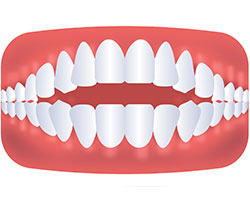
An open bite is a dental condition where the upper and lower front teeth don't touch when the mouth is closed, creating a gap between them. This misalignment is a type of malocclusion, meaning the teeth don't align properly when the jaws are closed. Open bites can affect both the front and back teeth, and can impact both the appearance of a smile and the ability to speak and eat properly.
Deep overbite - Lower front teeth bite into palate
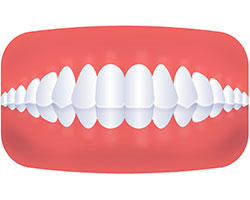
A deep overbite, also known as an excessive or severe overbite, occurs when the upper teeth significantly overlap the lower teeth. This can lead to a range of issues, including jaw pain, tooth damage, and difficulty chewing. Treatment options include braces, clear aligners, and in severe cases, orthognathic surgery.
Underbite - Lower front teeth in front of upper teeth
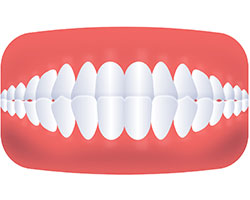
Patient's underbite was causing her jaw joint discomfort and excessive wear patterns on her teeth. After about 30 months of treatment starting at age 32, she now finds smiling and chewing much easier.
Spacing of teeth
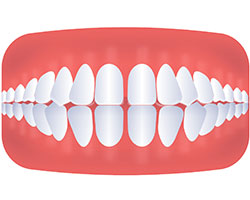
Excessive spacing between teeth, also known as diastema, refers to gaps or spaces that are larger than the normal spacing between teeth. While some small gaps can be natural or even aesthetically pleasing, larger gaps can cause concern.
Crossbite

A crossbite is a type of malocclusion where the upper teeth bite inside the lower teeth when the mouth is closed. It can affect one or more teeth, and may involve the front (anterior) or back (posterior) teeth, or both. Crossbites can cause various issues like uneven tooth wear, jaw pain, and even affect speech.
When Braces Aren’t Enough: Jaw Issues Corrected with Surgery (Orthognathic Surgery)
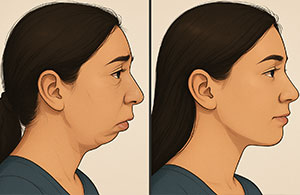
Some jaw problems go beyond what braces can fix alone.
Orthognathic surgery repositions the jaws to improve bite and facial balance. It’s used to treat underbites, overbites, asymmetry, and speech or chewing issues. This combined approach restores both function and appearance.